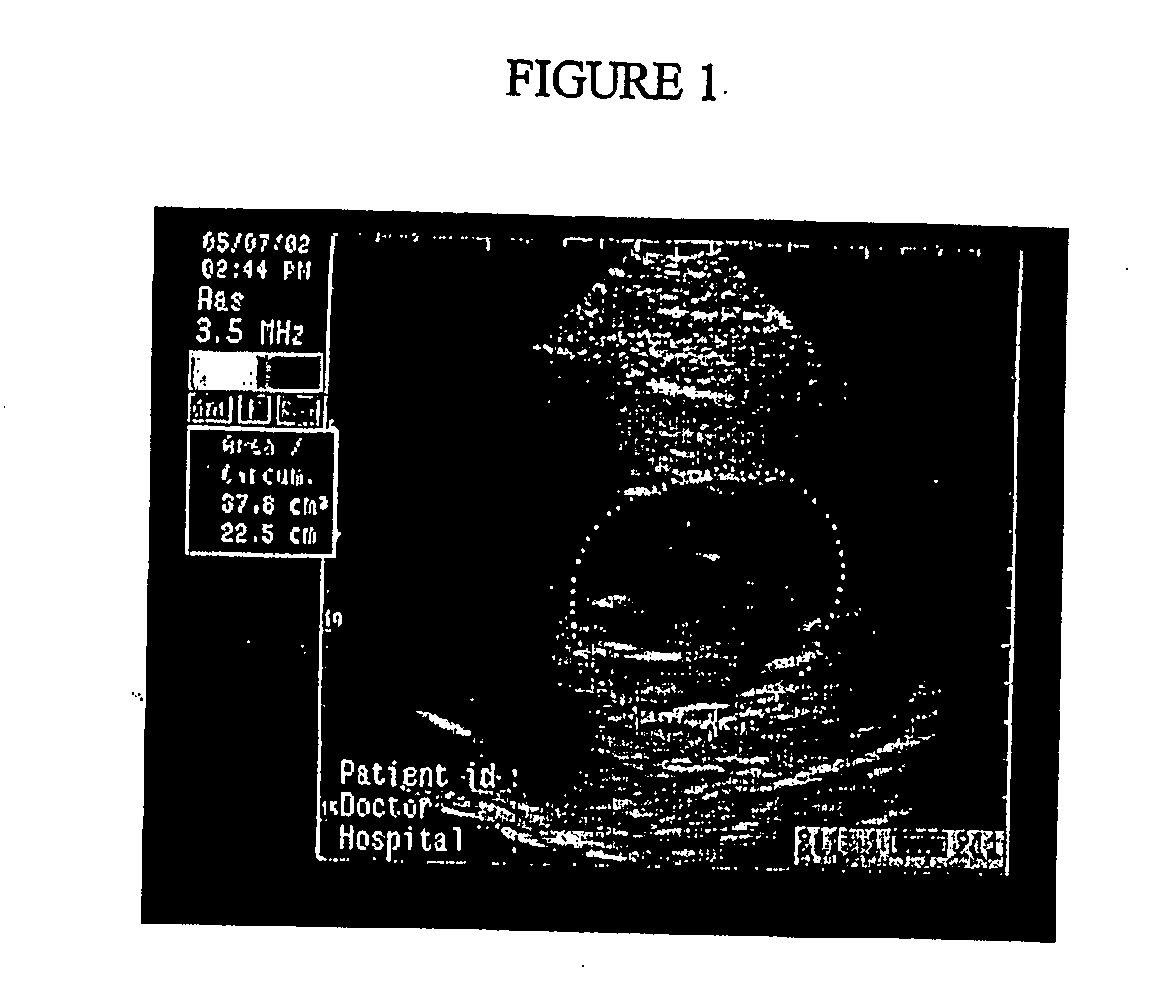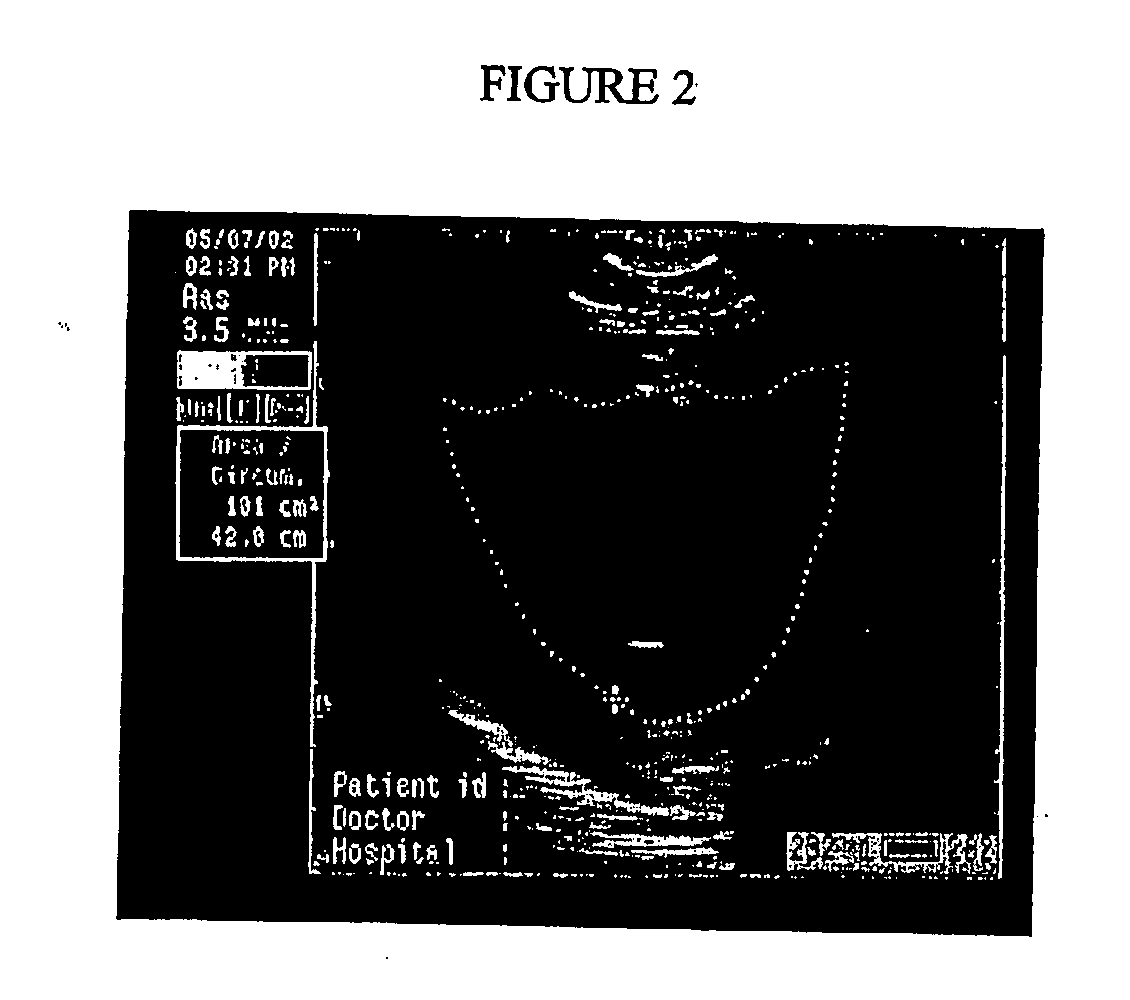Echocardiographic measurements as predictors of racing success
a technology of echocardiography and prediction of racing success, which is applied in the direction of instruments, ultrasonic/sonic/infrasonic image/data processing, ultrasonic/sonic/infrasonic diagnostics, etc. it can solve the problems of inexact science and large percentage of all young horses sold at auction that fail to recoup their original purchase price, so as to improve the odds of selecting high-earning racehorses
- Summary
- Abstract
- Description
- Claims
- Application Information
AI Technical Summary
Benefits of technology
Problems solved by technology
Method used
Image
Examples
example 1
Selecting the Group of Horses
[0056] Selected two dimensional echocardiographic (2DE) measurements were recorded for 5,431 yearling and 2,003 two-year-old Thoroughbred racehorses between the ages of 12 through 28 months. These were unique, unraced horses. Cardiac measurements were recorded primarily at select public yearling and two-year-old auctions between 1995 and 2000.
[0057] All descriptive statistics used only the most current 2DE measurements from each horse, in order to prevent multiple measurements of the same horse from overly influencing statistics within small groups of horses. Using the most recent measurement of the same horse also maximized the number of two-year-olds available for the study. Among the 7,434 unique horses, there were 2,940 fillies (40%), 4,494 colts (60%), 5,431 yearlings (73%), and 2,003 two-year-olds (27%).
[0058] Additionally, 5,909 horses (79%) were at least three years of age by 1 Jan. 2000. Among these horses, by the end of their three-year-old ...
example 2
Measurement Equipment and Techniques
[0066] A Pie Medical, digital cineloop scanner 200 from Classic Medical, (Tequesta, Fla.), with a 3.5 MHz annular array, multiring crystal transducer with a 30-cm field of view at 22 frames per second was used for all measurements. The depth of display varied from 15 to 25 centimeters depending on the size of the horse. The ultrasound recorder was equipped with electronic calipers that were used to measure the stored images at the time of the examination.
[0067] SAS release 6.12 (SAS Institute, Cary, N.C.), for Windows NT (Microsoft) was used for statistical analysis. Universe (IBM) for Windows 2000 (Microsoft) was used to manage the data. The server was a Dell 2300 Poweredge (Dell, Atlanta, Ga.) with dual 450 MHz Intel Pentium processors, running Windows 2000.
[0068] The 2DE imaging protocol was carried out on all horses, by the same, experienced (>5 years) technician to reduce measurement variability. Acoustical coupling gel (Aquasonic 100 ultr...
example 3
Reproducibility and Sources of Measurement Variability
[0085] Variation (or differences) between cardiac measurements is caused by a combination of within- and between-subject variation. Within-subject variation, sometimes called measurement error, indicates how accurately or reproducibly the technician and equipment measures a given variable (hearts and horses are moving targets). Between-subject variation is the range of expected differences among a particular variable in the general population that isn't due to error. Between-subject variation accounted for 84-92% of variation in cardiac measurements in this study, while within-subject variation accounted for 8-16% of variation.
[0086] Measurement variability was calculated for LVD, LVS, and SW among 1,464 horses measured in 1999. These cardiac measurements were repeated at least three times within a period of a few minutes. [1,571 horses were measured in 1999. Those excluded from this variability study lacked at least three meas...
PUM
 Login to View More
Login to View More Abstract
Description
Claims
Application Information
 Login to View More
Login to View More - R&D
- Intellectual Property
- Life Sciences
- Materials
- Tech Scout
- Unparalleled Data Quality
- Higher Quality Content
- 60% Fewer Hallucinations
Browse by: Latest US Patents, China's latest patents, Technical Efficacy Thesaurus, Application Domain, Technology Topic, Popular Technical Reports.
© 2025 PatSnap. All rights reserved.Legal|Privacy policy|Modern Slavery Act Transparency Statement|Sitemap|About US| Contact US: help@patsnap.com



